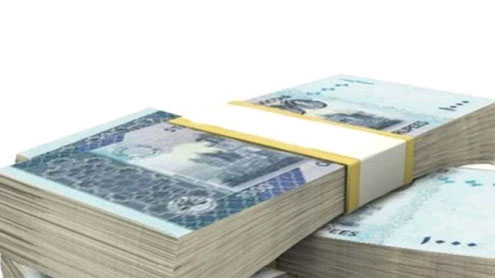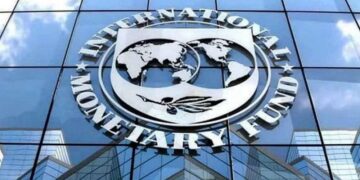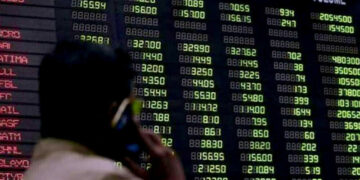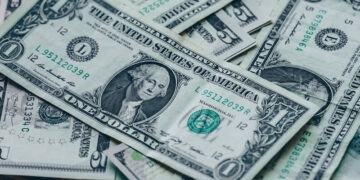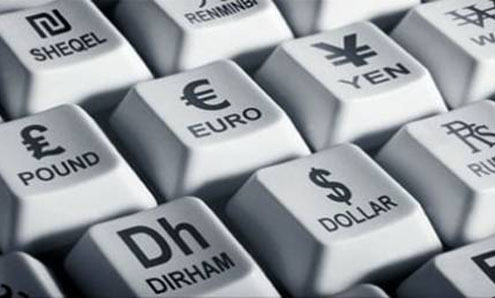 KARACHI: Upward trend in the global oil prices, rising trend in imports causing a surge in dollars’ demand, weak macro-economic indications and political uncertainties on the home ground dragged the rupee down against dollar during the calendar year 2011.
KARACHI: Upward trend in the global oil prices, rising trend in imports causing a surge in dollars’ demand, weak macro-economic indications and political uncertainties on the home ground dragged the rupee down against dollar during the calendar year 2011.
During the year, in the inter-bank dealings, the rupee fell sharply versus dollar, losing Rs 4.33, or 5.06 percent, at 89.93 and 89.96.In the open market, the rupee lost Rs 4.40, or 5.15, percent in relation to the greenback for buying and selling at 89.90 and 90.10. The national currency also shed Rs 2.17, or 1.91 percent, in terms of euro for buying and selling at Rs 115.87 and Rs 116.37.Just before the end of 2011, the rupee hit lowest at 90 following apprehensions that it might go further lower in relation to dollar in the following days because inflows had dried up. ‘No inflow ‘of dollars escalated fears among importers that the national currency might face more depreciation versus dollar.
To ease pressure over dollar buying, it was an encouraging effort by the government to bring stability in the exchange regime. In December 2011, a landmark bilateral currency swap arrangement (CSA) was signed between the SBP and the People’s Bank of China (PBC). The business community hoped for more precautionary measures in future, Malik Bostan, president of the Forex Association of Pakistan said.Other money market experts were of the view that bleak economic outlook may cause further depreciation in the value of rupee.
Rising oil prices made payments costlier and so the rush of importers caused surge in dollar’s value and it might continue as importers believe that outflow of the US currency would remain high during the rest of the fiscal year.One factor was very clearly visible that the country had failed to continue talks for further loans from the International Monetary Fund (IMF). As a result, it is a perception that foreign exchange reserves may start melting, mainly because of lack of funds from other lending agencies. Besides, in the wake of deteriorating Pak-US relation, the exchange rate may appear with negative outlook because there are no inflows from other sources. There are only remittances sent by overseas Pakistanis, or export proceeds.
The war with the US, however, may not be imminent and diplomacy could win the peace perceptions in the final analysis, but the current uncertainty on the national pride could well prove a double edged weapon for the shaky investors and economy.The major concern is that situation would worsen when repayment of IMF would start in February 2012. It is necessary for the government to check imbalances in imports which are higher. On the other hand, trade deficit is also widening.
At the same time, the government has to improve law and order situation in the country to attract foreign investors because the country’s risk is going up and the result is mirrored in the persistent foreign outflows from the capital markets.The Reserve Bank of India (RBI) said that it would act to prevent a downward spiral of the Indian rupee, which has been hit by fears about the global economy. The Indian rupee fell to record low of Rs 53.32 against dollar due to rising fears about the eurozone debt crisis and the world economy as well as falling trend in the Indian shares.
A factor, which appeared in a surprising way, was that despite huge repayments the country’s foreign debt has been on upward trend, indicating an alarming position because of drying up of dollar inflows.In the past, experts said, huge payments were met through borrowing from lending agencies, but these lenders have stopped funding for the country. Up till now, remittances and export proceeds have been helping the country to meet trade deficit, and last year the county succeeded to end up with current account in surplus.
However, first four months of the current fiscal year witnessed a current account deficit of 1.555 billion dollars, giving a negative message for the economic managers in the wake of declining foreign exchange reserves and beginning of repayments of the IMF loans from next month. The repayment of the IMF loan in the absence of further inflows could trigger panic-like situation, particularly in the money market. In one-month period of time, the dollar gained nearly 3.5 percent against rupee amid worsening Pak-US economy.
In the meantime, business community had criticised the government for keeping interest rates through a tight monetary policy, which seriously hampered their ability to raise capital. In fact, the country’s economy is still in a bad shape, as a result of negligence by the government’s proper attention. A lot of money is being spent on imports of heavy machines to set up the big and small industries in the county. The industries are operating well below their capacity in the absence of proper supply of gas and electricity, and due to shortage problem the exporters were not able to accomplish the booking orders on time. So we are losing global market and as a result foreign exchange reserves were cutting down and causing panic like situation in the country.
Besides, who can provide best performance if the government provides them jobs in their cities. The rural women are deprived of opportunity for setting up their micro business due to lack of start-up capital. They cannot avail institutional credit because they lack asset ownership.Women in general are deprived of inheriting, both of moveable and immovable property despite enjoying full support given for them by Islam as well as the country’s constitution.The present state of economy invites the pressing question about the credibility of the macroeconomic policies and the efficacy of complementary roles of its management.
The dramatic eclipse of economic growth in 2008, on account of balance of payment (BoP) crisis and financial slippages, resulted in high inflation and slow growth.Persistent inflation and low growth are just the symptoms of dismal performance of the private sector, which primarily determines the supply curve of an economy.It is a factor that contingency plans are always there as we constantly keep a close watch at key global and domestic variables and make policy adjustments. To stabilise the monetary policy, the SBP shows serious concerns over the rising investment by banks in government’s papers and terms this trend ‘unsustainable’ for the banking industry.
The country’s imports bill went up by 19.33 percent in only one month and this year stands at 3.729 billion dollars against 3.125 billion dollars of last year. On the other hand, exports fell by over 10 percent in Nov for the same month a year ago. The fear of flight of foreign investment in equities is one of the reasons that is taking toll of the Pak capital market.Pakistani rupee hits fresh low as US moves to freeze aid.Exporters held on to their dollars because of the bleak economic outlook, putting further pressure on the rupee, dealers said.
The International Monetary Fund forecast that Pakistan’s economic growth for the 2011/12 fiscal year would go down to 3.5 percent, lower than the government’s target of 4.2 percent.Pakistan’s current account deficit stood at 1.6 billion dollars in July-Oct compared with 541 million dollars in the same period a year earlier.
Islamabad has to start repaying 8 billion dollars IMF loan in early 2012, and without additional sources of revenue, its foreign exchange reserves may come under pressure. Country’s present foreign exchange reserves are at 16.77 billion dollars, compared with a record 18.31 billion dollars on July 30, 2011.
Additionally, the US lawmmakers agreed to freeze 700 million dollars in aid to Pakistan unless it steps up its fight against militant groups, adding to pressure on the country’s current account and dwindling foreign exchange reserves. Negative economic outlook, besides, exporters held the exports receipts and major payments pushed up the demand for the dollar on the currency market on Wednesday, dealers said. – Brecorder


